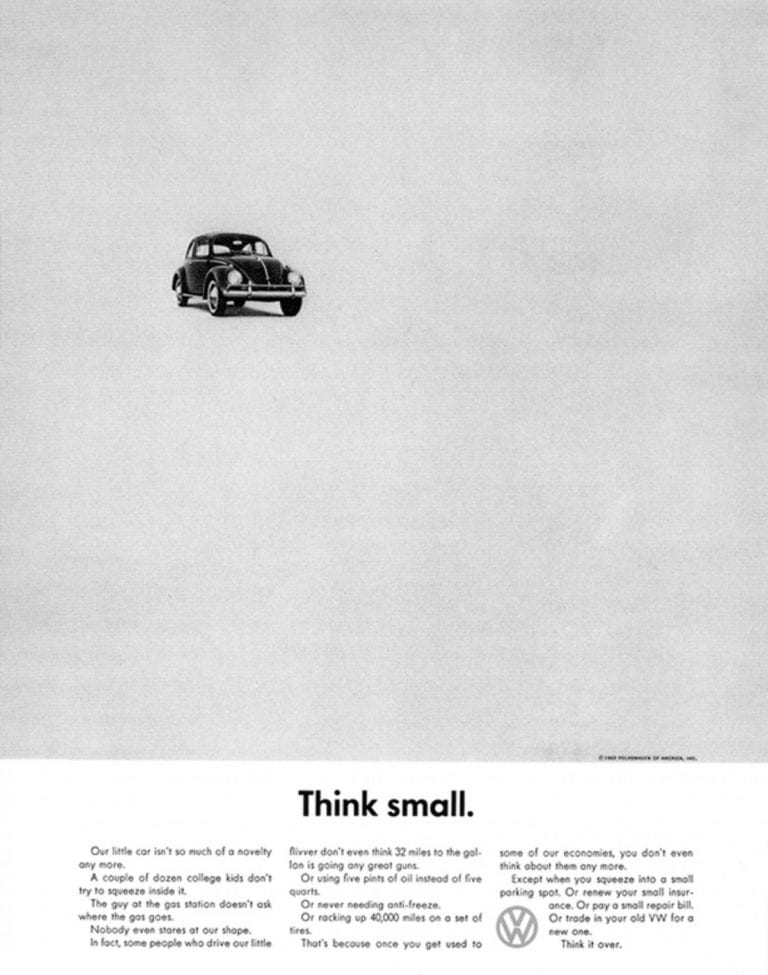Unlocking Growth: How to Choose the Right Marketing Vehicle for Your Brand
In today’s competitive landscape, brands must do more than advertise — they must be willing to connect. But what’s the best way to start that
Let’s start with a bold statement: people don’t like ads. Or rather: people don’t like ads that over-promise or are disingenuous.
If you haven’t noticed, there’s a barrage of advertising that’s dramatic, shameless, or both. Consumers are marketing-aware and anti-advertising. “What’s anti-advertising,” you ask? Let’s take a look and find out what tactics you can use to win over media-conscious audiences.
Understanding what anti-advertising is isn’t rocket science; it’s what it sounds like. They’re self-deprecating or poke fun at the concept of marketing and ads themselves. Some even tell consumers specifically not to buy a brand’s product.
Sounds counter-productive, no? For many people, however, anti-advertising is like a breath of fresh air in an oversaturated environment. When brands are self-aware and acknowledge what they’re trying to do (i.e., sell their products, increases sales, gain new followers on social media, etc.), consumers appreciate their frankness.
So, this counter-message is a powerful message in itself. And it works, especially with savvy Millennials and Gen Zers.
But, why is anti-advertising effective? The bottom line is consumers value trust in a brand above all else. Anti-advertising is a novel strategy to building trust between brands and their customers by being honest. And that honesty is refreshing. Anti-advertising allows brands to cut through the noise that makes audiences want to take notice.
It may seem quaint by today’s standards, but Volkswagen’s 1959 “Think Small” campaign redefined how automakers advertise cars to the public. Sixty years ago, ads were flashy and full-color, depicting the perfect driver, living the perfect life, in the perfect car.
So what did Volkswagen do? They focused on black-and-white simplicity, with anti-advertising featuring a single image of the VW Beetle with self-deprecating taglines like “Lemon,” “And if you run out of gas, it’s easy to push,” and “Heard any Volkswagen jokes lately?”
The campaign was so successful, it cemented the VW Beetle as the quintessential car of the 1960s and is widely regarded today as the ad that changed advertising.

If you’re a marketer and pitched a concept where you tell your customers not to buy your products on Black Friday, you’d probably be looking for a new job. But outdoor apparel company Patagonia did just that.
In 2011, they took out an ad in the New York Times titled “Don’t Buy This Jacket.” But they weren’t trying to commit brand suicide. Patagonia’s goal was to address a more significant issue: society’s increasing environmental footprint. And the message of their anti-advertising was simple: consume less, but only the best. It was a call-to-action for holiday shoppers to think twice before buying gifts and only purchase high-quality products built to last.

Have you ever heard of a brand ditching its logo and replacing it with… nothing? Neither had we until 2019, when Doritos created the ultimate anti-advertising campaign. In its anti-advertising commercial, titled “Another Level,” various shots of abstract triangles are shown as Gen Zers hold up blank bags of Doritos. You’re probably wondering why Doritos would do that? It was a bold move for a brand that felt its product is so iconic; it needed no introduction. Or logo.
We’ve talked about what anti-advertising is, what it isn’t, why it works, and brands that found success. But there are three golden rules you should follow if you want to create an anti-advertising campaign:
The most important thing to remember about anti-advertising is that it takes acute awareness about what’s going on in consumers’ minds. Think about your own experiences as a customer. Which ads worked? Which didn’t? And why? When you understand marketing from the other end of the funnel, you’re more likely to prove you know what people want.
So, be self-aware, be cheeky, and be bold. But always make sure you’re genuine. When your brand can strike the perfect balance, your anti-advertising message is sure to disrupt and influence audiences in all the right ways.
Plan your next anti-advertising campaign with us! Learn about our mobile pop-up shop services and get started by contacting us today.
In today’s competitive landscape, brands must do more than advertise — they must be willing to connect. But what’s the best way to start that

In the ever-evolving world of mobile marketing, brands are shifting gears from static ads to dynamic, experiential vehicles that bring their message to life. Whether

Anyone in the branding industry knows that experiences are far more important today than simple visibility. As companies work hard to reach their target audience,